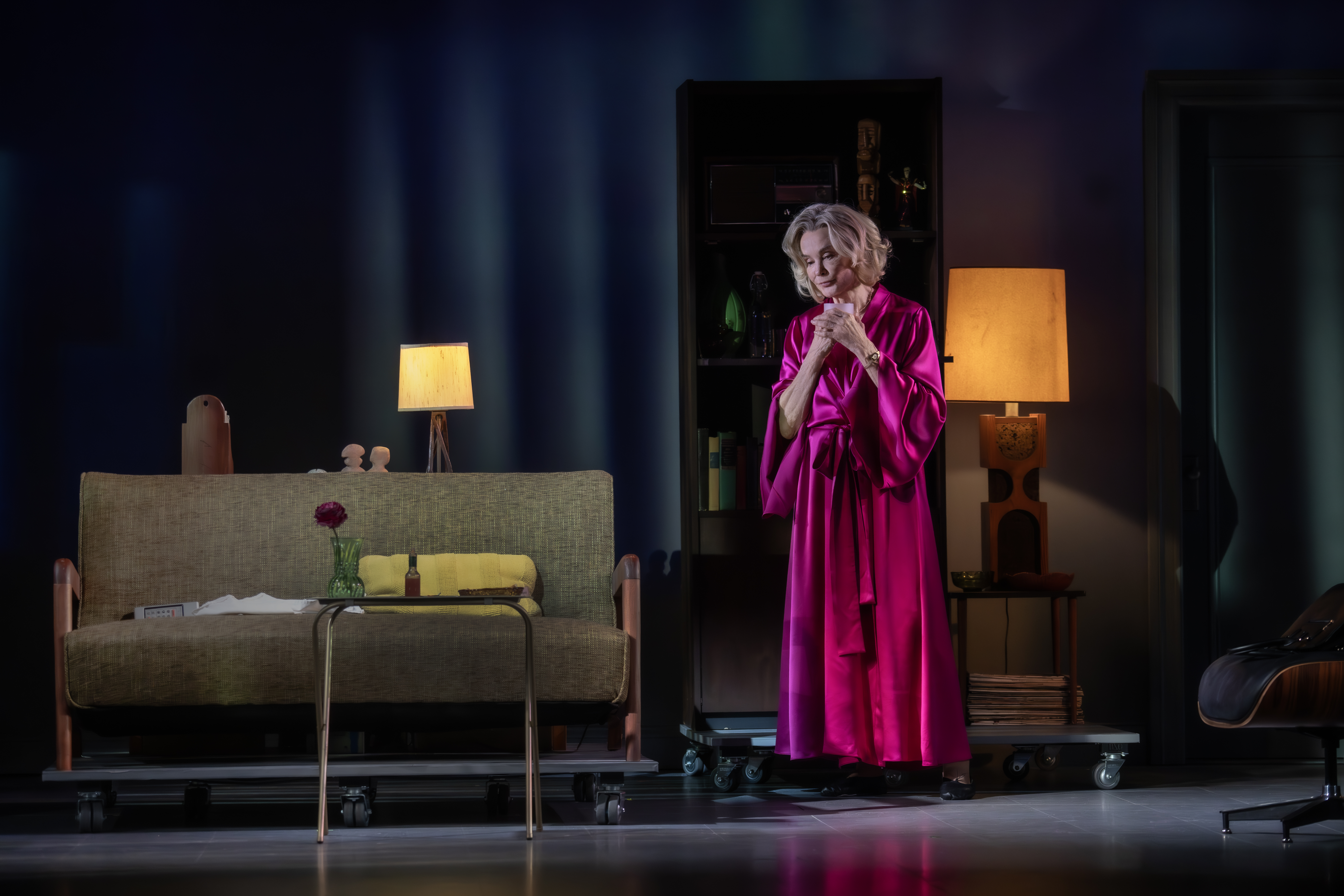The Queen of Colors

(© Lorenza Daverio)
Puppetry, dialogue, live music, and projections combine to make The Queen of Colors, now being presented by the New Victory Theatre at the Duke on 42nd Street, a magical event for young and old theatergoers alike. Indeed, if you can imagine an animated picture book being assembled on the fly, you have a pretty good sense of the remarkable accomplishment that co-creators Paul Obrich and Eva Noell have created here.
Based on Jutta Bauer’s children’s book, the show unfolds primarily on a small arched screen on which a willful little queen comes to life via a shadow puppet (given life and voice by Olbrich). The world around her — including her castle and living quarters, the palace grounds, and ultimately more distant shores — are created by Noell, who plays “Court Painter,” who stands at an overhead projection unit just to one side of the screen, and uses transparencies onto which some elements have been drawn. At other times, Noell draws and paints on them to create not only these places, but items with which the Queen plays. Also onstage is Olekasandr Voynov, who plays his original score — a mix of contemporary and folk European melodies — on accordion. (He later finds himself very begrudgingly brought into the action.)
Early on, the Queen tires of her monochromatic universe and demands that Court Painter bring color into the world. A red horse appears for her majesty. Blue creeps in, and ultimately becomes a churning sea. When this becomes too cold, yellow is the color that the Queen demands, but like another fairy tale character who finds she can’t be satisfied, the world of yellow — of sun and desert — is too hot.
For younger audience members, the show clearly has an instantaneous pull. After the house lights dimmed at a recent performance, Noell began drawing the title character. “A penguin!” one tyke shouted, hoping to be the first to become a part of the action. (Audience suggestions are asked for, if not always taken.) In addition, Noell drawing a bent straw that allows the Queen to sip from a drink set on a high table also seems to be a particularly favorite moment with the kids.
As for older members of the audience, they can focus on the ingenious use of the simple technologies and the way that Noell and Olbrich have choreographed their actions from two distinct sides of the stage. For example, one can’t help but wonder exactly how long it took them to get the queen puppet to work in conjunction with the red ball that the queen tosses merrily in the air.











